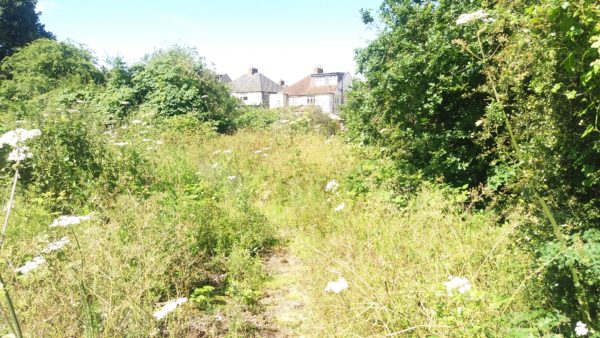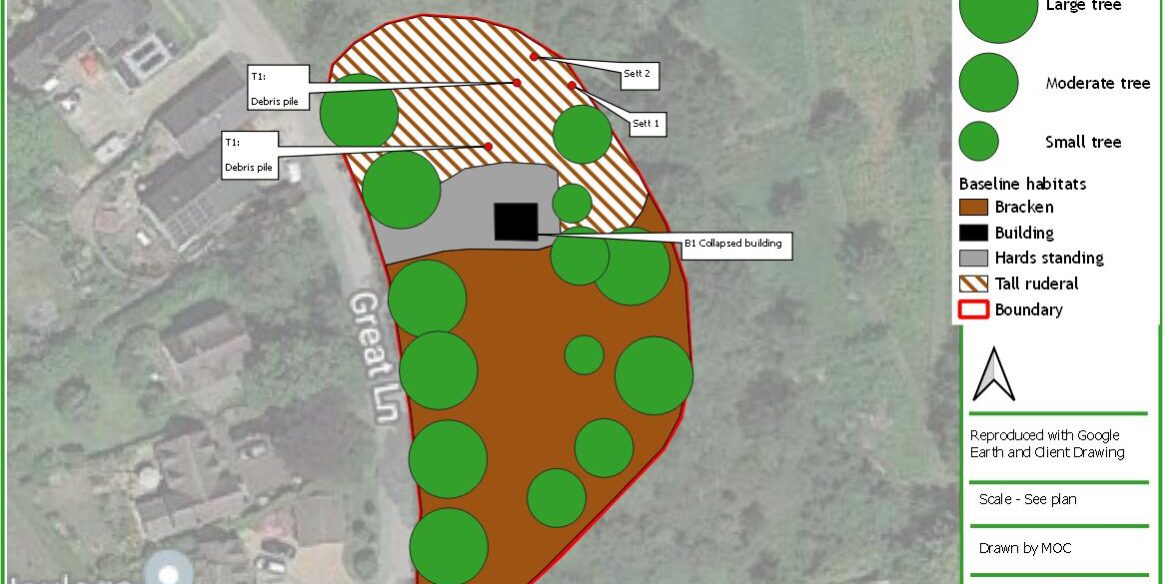UPDATE:
Its official, Biodiversity Net Gain will be mandatory for all large sites as of the 12th February 2024 (see link below for the announcement for the Government!)
Small scale sites will follow in April 2024.
NEWS FLASH – The Statutory Biodiversity Net Gain Metric has been released, further updates will be added as and when new information becomes available, but going forward this metric version will be the one that has to be used.
What is biodiversity net gain?
The UK government has produced a system of providing biodiversity gains within the planning system that means nature is left in a better state than it was found. This is done via the Biodiversity Net Gain (BNG) metric produced by DEFRA (GovUK, 2023, https://www.gov.uk/guidance/understanding-biodiversity-net-gain).
BNG will apply to all planning applications once it becomes law, currently understood to be in January 2024 for large sites and April 2024 for small scale sites. When this becomes mandatory a 10% gain will be required on a site, this may mean redesigning the site, giving over areas to nature or buying biodiversity (habitat) credits off site and agreeing to their management for a 30-year period.
However, many local authorities have already made biodiversity net gain local policy, for instance in Buckinghamshire and Milton Keynes it sits in core policy 9 and currently they require a gain only, not 10% (although this will change when BNG becomes mandatory). Central Bedfordshire also have the same requirements under policy EE2 for instance (Bucks CC and Central Beds CC).
Some exemptions will apply, these are not fully known as yet, but are very likely to include householder applications (those that include loft conversions, extensions etc.), self-build sites, very small sites known as ‘de minimis’ and a threshold of 25m2 and biodiversity gain sites (where habitats are being enhanced for wildlife) (GovUK, 2023, https://www.gov.uk/government/consultations/consultation-on-biodiversity-net-gain-regulations-and-implementation/outcome/government-response-and-summary-of-responses). However, although exempt gains maybe sort via planning policy rather than mandatory gain.
How does it work?
Undertaking a BNG assessment consists of three stages or reports as follows –
-
- An ecological baseline assessment, this is required in order to access the site for protected species e.g. bats, reptiles, badgers etc. (these laws still apply) and get a baseline of the habitats on site.
- Condition assessments of the habitats, these are set scoring (produced by DEFRA) and feed into the biodiversity net gain metric.
- And finally the biodiversity net gain metric itself. This works out from the survey effort and the proposed plans what the site loss or gain will be.
Which metric should be used?
There are two metric’s in use these being the standard type and the small scale metric (SSM).
The SSM only applies as follows –
For residential development:
– there are fewer than 10 residential units on a site area (no more than 9 units) less than 1 hectare; or
– if number of residential units is not known, the site area is less than 0.5 hectares
For non-residential development:
– where the floor space to be created is less than 1,000 square metres; or
– where the site area is less than 1 hectare
However, the SSM cannot be used on such sites where:
– habitats not available in the SSM are present
– priority habitats are within the development site (excluding some hedgerows and arable field margins)
– European protected species are present on the development site
– any offsite interventions are required
The remaining sites will all fall under the standard metric (https://publications.naturalengland.org.uk/publication/6047259574927360).
What does this all mean for developers or homeowners doing a planning application?
Firstly, almost all developments will result in a loss of habitat units on a site, taking grassland or scrub (which is good for wildlife), but understandably may be seen as derelict or wasteland by a developer, will result in a loss of BNG credits (habitat units) when houses are added, as housing or built habitats are nowhere near as good as semi-natural habitat.
Why I hear you ask?
Well wildlife likes mess, in fact the messier the better, scrub, grassland, wet areas, wooded areas and so on will attract wildlife, these habitats in a mosaic will provide lots of niche areas and edges that create foraging and shelter for species in that given area. Combining grassland with scrub and trees increases this suitability further.
So why not clear the site first?
This has already been thought of and should a developer think to do this it will really make the situation worse in the long run. When the site has been cleared, we as ecologists, have to revert to Jan 2020 using aerials and any photo evidence to establish the habitats and then assume that the condition of these was as high as it gets.
What are the solutions if there are losses on site?
Following the mitigation hierarchy, we look to do the following –
-
- Avoid the loss, often this isn’t possible as building homes usually results in a major change in the site.
- Minimize, is it possible to less fewer units? Can a hedge be retained? Is there scope to retain the trees? Etc.
- Compensation, giving over space within the site to allow the gain to be found for instance (this space needs to be non-private i.e. it can’t be gardens).
- Offset, this is where on site gains can’t be found e.g. the site is to small, has no non-private areas etc. and the loss has been minimized as best as possible. Habitat banks trading platforms and private individuals can sell the excess habitat units/credits in order for the developer to for fill their 10% gain requirements.
What does it cost?
The process of undertaking the BNG metric by an ecologist is likely to cost somewhere between £2499 +VAT upwards depending on the site size, condition assessments required and how much time is involved minimizing the losses and working out whether it is possible to get a gain on the site. There may be hidden costs as well like having drawings redone, landscape plans changed and so on.
Off site habitat unit/credit costs are likely to vary depending on the requirements, but for the most likely unit requirements, grassland and scrub, the developer will be looking at approx. £25k to 45k, for rarer units such as woodland or trees expect to pay much more then this (https://environmentaltradingplatform.com/).
This may seem a lot at first, but once you factor in a 30yr-management period an average unit price only works out at £1000/yr. to plant, hay cut and compost/sell grassland hay for instance, which isn’t a great deal.
Got questions?
Need a BNG report for your planning permission?
Contact us today here.
References –
Cost per unit, (2023), https://environmentaltradingplatform.com/, accessed on 25/11/2023
SSM and standard metric requirements (2023) https://publications.naturalengland.org.uk/publication/6047259574927360, accessed on 24/11/2023
General info, (2023), https://www.gov.uk/government/consultations/consultation-on-biodiversity-net-gain-regulations-and-implementation/outcome/government-response-and-summary-of-responses, accessed on 24/11/2023
#BNG #Biodivertsity Net Gain #ecologysurveying








